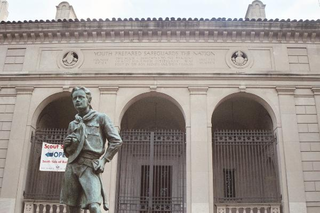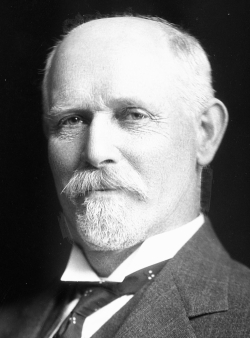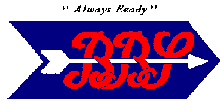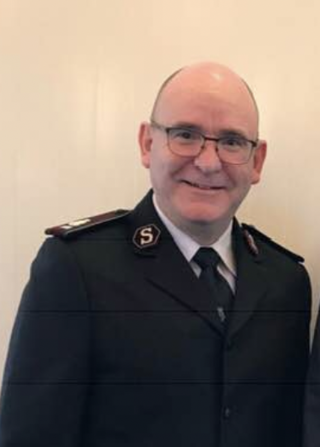
Scouts Aotearoa, known internationally as Scouts Aotearoa New Zealand is a trading name of The Scout Association of New Zealand, the national Scouting association in New Zealand and an affiliate of the World Organization of the Scout Movement (WOSM) since 1953. Scouts Aotearoa had 12,156 youth members and with 5,888 volunteers as of the end of 2020.

The Scout and Guide movement in Canada is served by many separate organizations, some with various national and international affiliations.
Scouting started in Victoria, Australia, as early as 1907 and local Boy Scout patrols and troops formed independently. Several separate central organisations began operating including Boys' Brigade Scouts, Church Lads' Brigade Scouts, Chums Scouts, Imperial Boy Scouts, Girl Peace Scouts, Imperial Boy Scouts Victoria Section, Imperial Boy Scouts Victorian Section, Gippsland Boy Scouts Association, Australian Boy Scouts, Australian Imperial Boy Scouts, The Boy Scouts Association, Life-Saving Scouts of the Salvation Army and Methodist Boy Scouts.
Scouting in South Australia began in 1908.

Scouting and Guiding in Queensland is represented by Scouts Australia, Girl Guides Australia, Plast Ukrainian Scouts, and the Australian Baden-Powell Scouts' Association.

Scouting in Tasmania began in 1908 with several separate associations operating in the early years including the Chums Scout Patrols, League of Boy Scouts, Girl Peace Scouts, British Boy Scouts and YMCA Scouts. These were later joined by The Boy Scouts Association, The Girl Guides Association and Life-Saving Scouts and Life Saving Guards of the Salvation Army. Some local groups of Scouts moved between associations. There has also been representation by the Baden-Powell Scouts' Association with a group of scouts in Devonport under Alan Richmond, OAM affiliating in May 1984.
Scouting started in New South Wales, a State of Australia, in 1908. In the early years, local Boy Scout patrols and troops formed independently and several separate associations began operating including the Chums Scout Patrols, League of Boy Scouts, Girl Peace Scouts, Boys Brigade Scouts and Church Lads Brigade Scouts. These were later joined by The Boy Scouts Association, The Girl Guides Association and Life-Saving Scouts and Life Saving Guards of the Salvation Army. Some local Scout groups moved affiliation between the different associations.

Scouting in the United States is dominated by the 1.2 million-member Boy Scouts of America and the Girl Scouts of the USA and other associations that are recognized by one of the international Scouting organizations. There are also a few smaller, independent groups that are considered to be "Scout-like" or otherwise Scouting related.
In the Faroe Islands, there are four Scout and Guiding associations forming the Føroya Skótaráð. They work under the same basic rules, but they do have their own specialties.
Scouting and Guiding in Newfoundland and Labrador has a long history, from the 1900s to the present day, serving thousands of youth in programs that suit the environment in which they live.

Sir George Alexander Troup was a New Zealand architect, engineer and statesman. He was nicknamed "Gingerbread George" after his most famous design, the Dunedin Railway Station in the Flemish Renaissance style. He was the first official architect of the New Zealand Railways. He designed many other stations, including Lower Hutt and Petone.

GirlGuiding New Zealand is the national Guiding organisation in New Zealand. GirlGuiding New Zealand currently splits New Zealand into 8 regions around the country with approximately 10,000 members.
Non-aligned Scouting organizations is a term used by the World Organization of the Scout Movement (WOSM), World Association of Girl Guides and Girl Scouts (WAGGGS) and their member national organizations to refer to Scouting organizations that are not affiliated with them. See List of non-aligned Scouting organizations.
The Scout and Guide movement in Australia consists of:

Lieutenant Colonel David Cossgrove, (1852–1920) of the New Zealand Army served in the South African War – also known as the Second Boer War – with Robert Baden-Powell, founder of Scouts and Guides in the United Kingdom. Cossgrove took Baden-Powell's ideas back to New Zealand with him and began similar programmes in Christchurch.

The British Boy Scouts and British Girl Scouts Association is an early scouting organisation, having begun as the Battersea Boy Scouts in 1908. The organisation was renamed as the British Boy Scouts and launched as a national organisation on 24 May 1909. In association with other Scout organisations, the BBS formed the National Peace Scouts in 1910. The BBS instigated the first international Scouting organisation, the Order of World Scouts in 1911.
Besides the Boy Scouts of America (BSA) and Girl Scouts of the USA, both of which still exist, there were other Scouting and Scout-like organizations that arose over the years in the United States. Many are now defunct, including these examples.
Royal Visit of the Duke and Duchess of Cornwall and York to New Zealand was a 1901 New Zealand documentary film made by the Limelight Department of the Salvation Army in Australia.

Lyndon Vernon Wayne Buckingham is a Salvation Army officer and Christian minister from New Zealand, currently serving as the General of The Salvation Army since 3 August 2023. He is the first person from New Zealand to hold the office.









